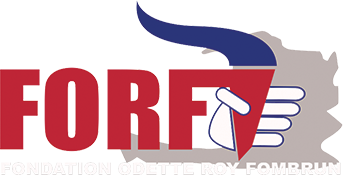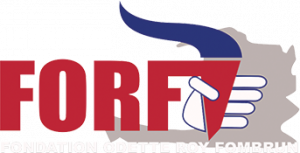What is the Touris Lakay ?
The Touris Lakay is a community-based tourism that aims to energize each region on the basis of the wealth available there. It is a tourism that respects our culture, our heritage and the Haitian people. The Touris Lakay is above all a great konbit of three forces that have been excluded until now in the development projects of the communities. These three forces are :
- Residents of the rural community
- His youth too often dispersed
- Its diaspora
This konbit aims at taking care and development of the rural world by its own nationals from its latent potential. It must lead to recognize, protect and make the most of its environment, its natural, cultural and historical heritage, to generate income in a perspective of sustainable production of wealth.
To achieve this, a sense of collective pride is essential. It must provoke in those who have left their community enough enthusiasm to return home and participate in this great movement of development through well thought-out tourism. A development capable of attracting national and foreign visitors eager to discover and experience the novelties proposed in integrated programs of well-planned tourist circuits.
The Touris Lakay does not claim any luxury but requires cleanliness, hygiene, security, decent welcome (including comfortable toilets) and above all originalities of all kinds: dances, local crafts, healthy and traditional local cuisine… This rural community development based on nature, history, culture, human potential and the application of the philosophy of Konbitisme is a royal way of cooperation between the three aforementioned groups and an encouragement to the unification of the Haitian society.
For the implementation of Touris Lakay
FORF encourages :
- The holding of seminars aimed at making the community aware of the great constructive scope of applied Konbitism, of the potential for exploitation of the region’s wealth and especially of the great entrepreneurial capacities to be developed.
- The organization of surveys that will take stock of the situation of the area, its strengths and weaknesses, and all the exploitable wealth: natural, cultural, historical, human.
- The mobilization of the community to identify and choose development projects likely to attract visitors and generate income.
- The constructive and mobilizing involvement of members and associations of the diaspora from the region around the selected projects.
TOURIS LAKAY is an important component in achieving FORF’s national vision:
« HAITI, HISTORICAL AND CULTURAL CENTER OF THE CARIBBEAN ! »
Principles underlying Touris Lakay
Touris Lakay is a form of tourism complementary to mass tourism promoted by the Ministry of Tourism and Creative Industries. Three principles underlie the action:
Principle 1
Identification of sites of interest to both national and international tourists. These sites can be beautiful natural waterfalls, sea fronts or mountain peaks. They can also be colonial ruins, caves and Indian burial grounds or places of residence, be places where colonial battles were held, or represent significant places in the history of the country. These sites must be geographically close to each other in a region to allow for the creation of one or more tourist circuits.
Principle 2
Organization of training seminars given to the inhabitants of the region to train them in the principles of entrepreneurship and accompany them in identifying the exploitable potential of their area. Participation and involvement of local communities linked to these circuits of interest. Organization of the workforce necessary for the development, administration, protection of the sites and tourist circuits, and the safety and well-being of visitors by local officials and decision-makers.
Principle 3
Involvement of Haitians living abroad in the form of participation in projects, investments, donations and technical volunteering, scholarships. The diaspora originating from the communities and regions where these sites are located makes a key contribution to the promotion of tourism and economic development in each of these circuits.
Role of the FORF
The role that FORF is committed to playing in this process is that of facilitator, fundraiser, and pilot project to test the viability of the process. Once launched, the projects must be self-sustaining both administratively and financially. They must also contribute to the protection of heritage, the beautification of the environment, and the stabilization and economic and social development of communities.
Pilot Project 2016-2019
Training of villagers in the heritage and art of taïno inspiration in Bois-Neuf/Ravine Sèche, commune of Saint-Marc. Construction of a small training and production center for pottery and jewelry of taïno inspiration. Integration of the village in the tourist circuit of the Côte des Arcadins. Possible construction of a small museum/interpretation center of taïno art in the village of Ravine Sèche.
– Step 1: Feasibility study / Preparation of a project plan / Establishment of local alliances
– Step 2: Call for pilot project funds, staff resources
– Step 3: Implementation of the pilot project / Continued fundraising for the entire project
– Step 4: Evaluation of the Pilot Project and Follow-up Analysis
– Step 5: Expansion of the pilot project to different locations and tours

